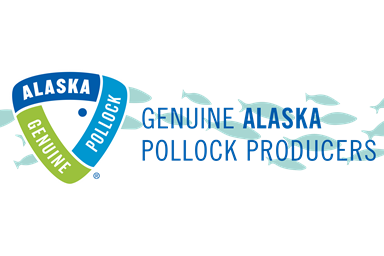October 29, 2023
Wild Alaska Pollock to be Showcased as Part of USDA Trade Mission to Southeast Asia

KUALA LUMPUR, Malaysia.— Wild Alaska Pollock will be showcased, along with other U.S. agricultural commodities, on a U.S. Department of Agriculture (USDA)-sponsored Trade Mission to Malaysia and Singapore this week, the Association of Genuine Alaska Pollock Producers (GAPP) announced today. Alongside USDA Under-Secretary for Trade Alexis Taylor and other commodity marketing association leaders, GAPP Chief Executive Morris Craig Morris will work to explore new opportunities for Wild Alaska Pollock in these critical Southeast Asian markets and forge relationships, generating new demand with buyers in the region. Malaysia, specifically, was identified in the GAPP 2040 study as a “very favorable” market for Wild Alaska Pollock, making this week’s mission even more relevant.
“Continuing to identify new international markets and opportunities for Wild Alaska Pollock in all its forms continues to be a goal for GAPP that our Board believes in,” said Morris. “USDA has been a phenomenal partner in helping create opportunities to learn and understand the food culture and export opportunities in key markets and this week will no doubt be another opportunity to learn about what more GAPP can do on behalf of our members to build demand in the regions—especially Malaysia which we’ve previously identified as a core target market with immense opportunity for our fish.”
The mission begins in Kuala Lumpur, Malysia today, where delegates participated this morning in a roundtable discussion with Under-Secretary Taylor, tour a fish market/traditional wet market and host a buyer reception for key export contacts in the country. In Singapore, delegates will visit Singapore Agri-Tech Food Expo Asia and participate in the U.S.-Association of Southeast Asian Nations (ASEAN) Business Council Roundtable.
In 2021, GAPP contracted with McKinley Research Group for market research on current and potential future markets. The research provided GAPP and its members with objective, data-driven assessments about current and potential future Wild Alaska pollock markets over a mid-to long-range time horizon (year 2040). International markets were ranked, based on a variety of factors including purchasing power, cultural food traditions, population growth and more from “very favorable” to least favorable.
As part of this study, Malaysia was identified in the highest category “very favorable” denoting that the market has opportunities for important growth with investment, in near-term or by 2040. According to the study, Malaysia was found to have “avid fish eaters, an increasing demand for imported fish, a growing population that is mostly urban and a large middle/upper class,” all factors which ranked it favorably compared to the other more than twenty export markets ranked in the study. Additionally, it is notable that Malaysia has the highest per capita seafood consumption among study countries (55 kg/per person) and a culture where everyone can consume fish.
“It’s exciting to be going to one of our most favorable markets to experience their culture and explore opportunities for the future of Wild Alaska Pollock first-hand,” said Morris. “GAPP’s 2040 study continues to drive our priorities in both marketing and partnership efforts and this Trade Mission comes at a critical time as we work towards planning GAPP’s programs for 2024.”
The 2040 study showed that Malaysians embrace Wild Alaska Pollock in both its fillet and surimi forms, with the Wild Alaska Pollock and other whitefish being cooked at home as a center-of-the-plate entrée, with the head on and bones in, fried or cooked in sauce. During Chinese New Year, fish is served with the head and tail on, signifying a start and an end to the year. Surimi is also popular and available at noodle stalls, in fish balls, fish cakes, and as a snack food in convenience stores.
“Malaysians are adventurous eaters, drawing their food culture from many other countries and cuisines, but unmistakably, Malaysia is a country of fish-eaters with annual consumption per capita totaling 1.7 metric tons with whitefish imports totaling 19,200 metric tons,” said Morris. “With a population that’s expected to grow by more than 19 percent by 2040, the opportunity is huge for Wild Alaska Pollock as the country will need to grow imports to match population growth and culinary desires.”
The Trade Mission concludes on November 3. A full summary of the 2040 study can be found here. Learn more about the USDA Trade Mission here.

